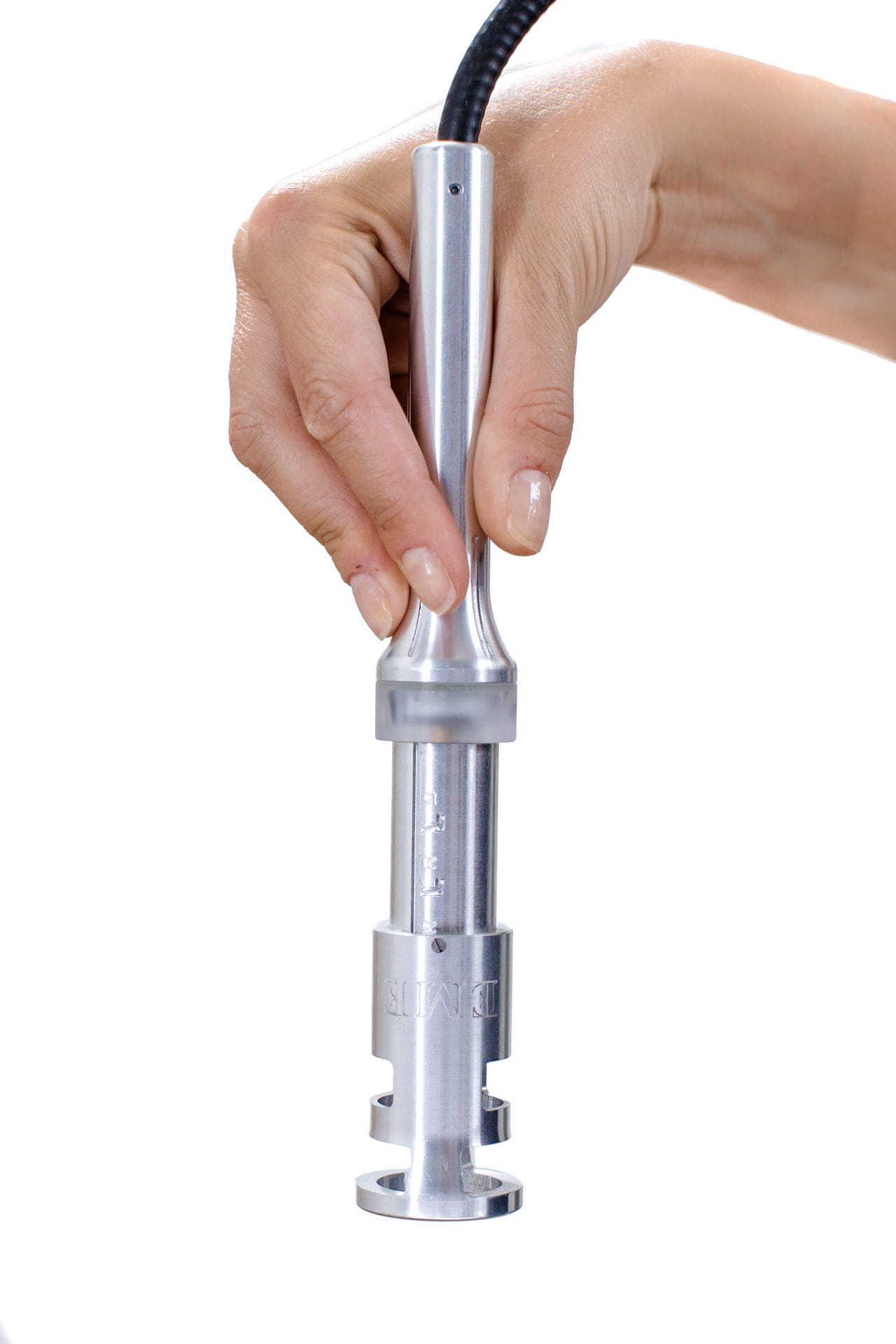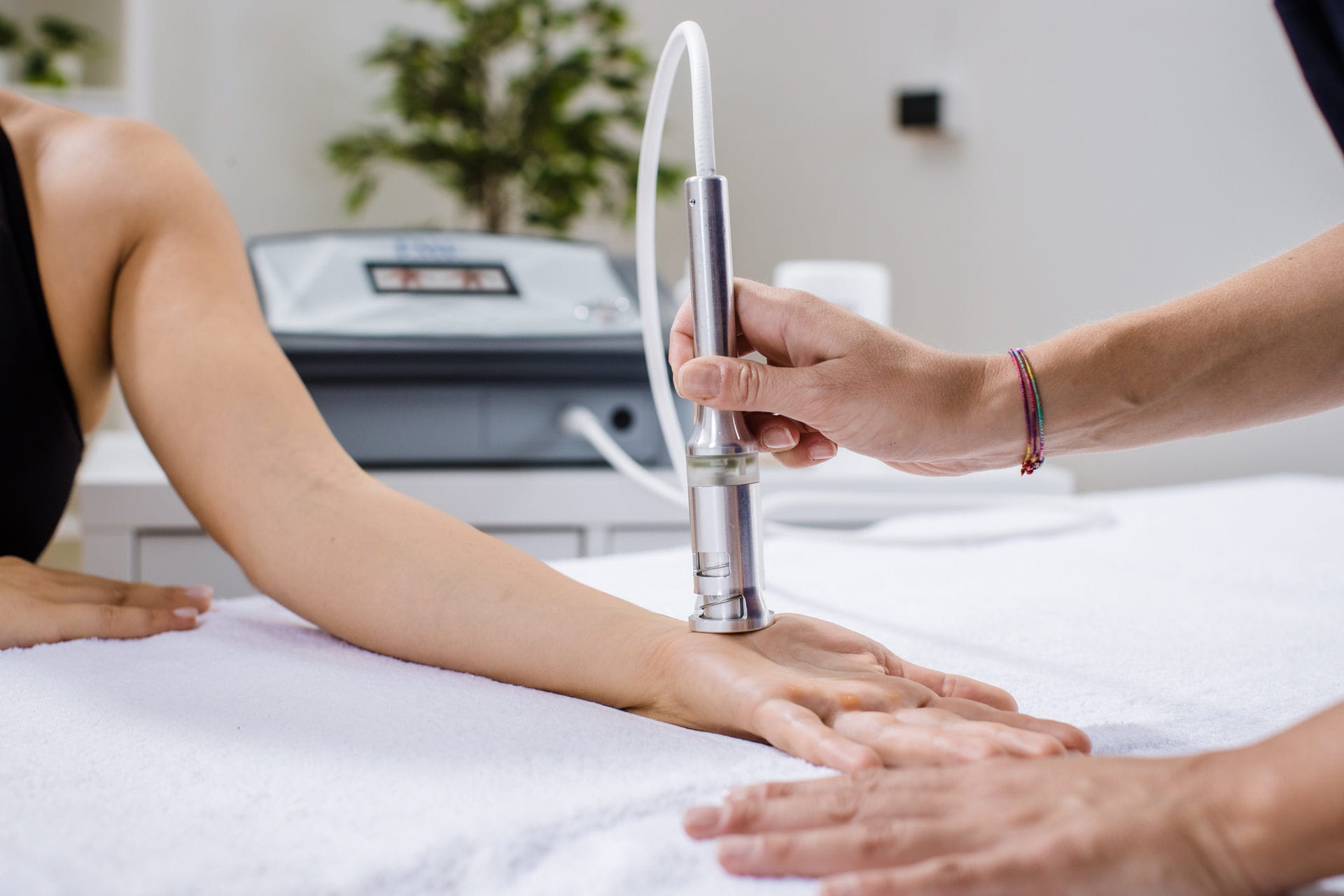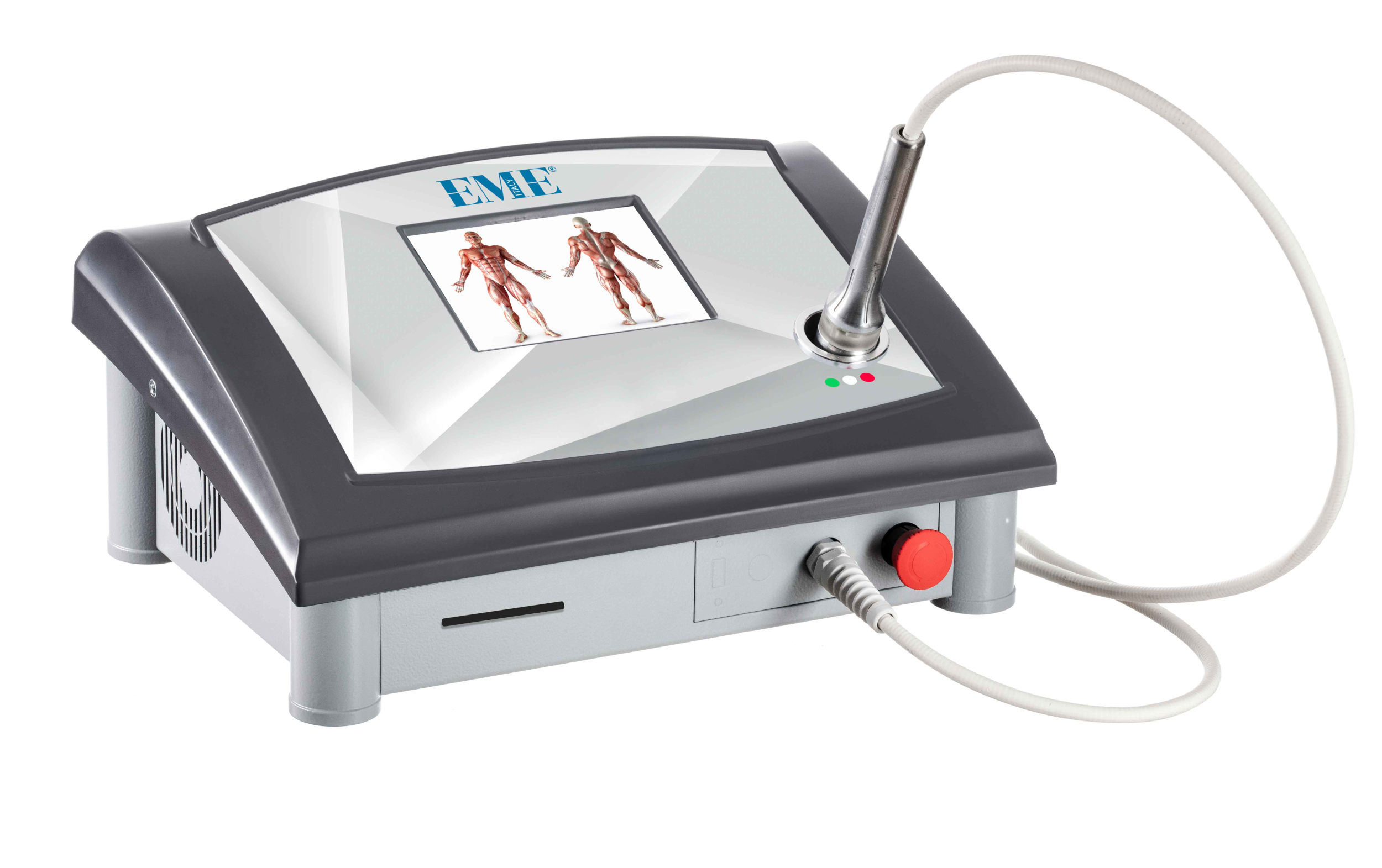Vikare - high performance for the most demanding users
The high laser power allows stimulation of deep tissue structures, which can promote rapid cell regeneration. Laser therapy can therefore also be used for chronic conditions such as osteoarthritis.
Simple and safe laser therapy applications
The sophisticated device software is intuitive for users to use in a wide variety of areas. As with all EME Physio devices, the Vikare laser is equipped with controls and user menus that allow safe and comfortable use.
The highest safety standards are applied to ensure that both patient and therapist are provided with the best possible protection.
Vikare - versatile laser applications
Thanks to its features, the Vikare laser can be used in a wide variety of sectors such as sports medicine, orthopaedics, neurology, rheumatology, acupuncture and dermatology.
This applies in particular to acute inflammations, chronic and degenerative diseases such as knee arthritis.
What are the benefits of the Vikare laser?
The device is a high-power laser operating at a fixed wavelength of 980 nm. Its peak power is 8 watts. In multi-spot mode, the device automatically calculates the energy dose delivered (fluence in joules).
Laser irradiation is designed to induce stimulating and regenerative effects in chronic diseases. Vikare devices can also be used to treat inflammation and oedema caused by acute diseases and pain syndromes in joints, muscles and soft tissues.

Table top design
Display touch screen 6"
Wavelength 940 nm
Power 8W
Continuous and pulse modes
32 protocols stored, 200 protocols stored in internal memory and 200 protocols stored on smart card
When to use a high intensity laser?
Bruising, bursitis, tendonitis
Acute and chronic pain
Deeper tissue
Rapid tissue regeneration
Biostimulation effect

Supraspinatus tendonitis (shoulder pain): tips and treatments
Supraspinatus tendonitis is becoming increasingly common and painful.
This symptom, which affects the shoulder, is nothing more than inflammation of the supraspinatus muscle. Due to the degree of inflammation and tendon calcification, it can cause intense pain and functional and mobility limitations during even the most normal movements of daily life.
Causes:
The main causes of this symptom may include: Genetic factors in the shape of the joint bones. Thickening of the tendons or uneven shoulder shape can impair normal movement, resulting in inflammation and consequent pain.
Improper posture maintained and assimilated over time.
Previous injuries that form scar tissue that interferes with normal muscle, joint and tendon movement.
Playing sports that require effort with the arms above the head, especially if repetitive, such as volleyball, tennis or weightlifting.
Symptoms:
The first and most important symptom is undoubtedly pain. If the patient experiences acute pain when raising the arm to between about 70° and about 110°, a movement where the inflamed fibres are crushed by the humerus, then we are dealing with supraspinatus tendinitis. To confirm the diagnosis, the doctor may prescribe further tests, such as ultrasound or MRI, which will show in detail the degree of inflammation or possible calcification of the tendons.
The treatment is based on the elimination of the tendon inflammation, possibly by removing the calcification that has developed.
The most commonly used and effective therapies:
A high-powered laser to relieve pain and reduce inflammation (Bipower Lux - Crystal Yag)
Radial shock waves, designed to eliminate calcification, thereby increasing mobility, reducing pain from increased vascularisation, while removing inflammatory factors (Shock Med)
Sciatica: causes, symptoms and the LIFE-Stim cure
Although sciatica is often mistakenly considered as a unique form of the disease, it is a symptom complex that can have pathological causes of various natures.
Sciatica is in fact a pain sensation caused by compression of the lumbar spinal nerve roots or inflammation of the sciatic nerve.
The sciatic nerve, which originates from the sacral plexus, is the longest part of the human body and, through its branches, innervates the anterior and posterior muscles of the thigh and leg.
Causes:
Traumatic lesions of the sciatic nerve are the result of disc herniation. It is not uncommon for a nerve root in the lumbar vertebrae to be compressed or for the vertebrae to slip as a result of a spillage from the disc.
Women of childbearing potential are significantly affected. The uterus may exert varying degrees of compression on the sciatic nerve and vertebral muscles, or pressure may be increased by increased weight, which is favoured by arthritis, severe scoliosis, microtrauma caused by vertebral lesions.
Sciatica can be caused in some cases by specific diseases such as: lumbar spinal stenosis, piriformis syndrome (the musculature of the gluteus maximus through which the sciatic nerve flows), spondylolisthesis and spinal tumours.
Long periods of poor posture can also contribute to vertebral disease, which can compress the nerve.
Symptoms:
In most cases, the pain is mainly in the lower back, gluteus maximus or back of the leg, but can extend to the upper back - all the way to the hip - or down to the top of the foot. The inflammation usually manifests itself in one leg only and may take the form of sharp and unbearable pain, or mild or still mild pain, numbness and tingling of the legs and difficulty in controlling movement of the lower limbs.
Treatment:
The treatment of sciatica is closely related to the aetiology. Sciatica pain, as mentioned above, is a symptom resulting from several causes, which must be identified by specific diagnostic tests, such as: neurography, electromyography, blood tests or imaging tests.
For rehabilitation, rest, correction of posture, muscle strengthening, muscle decompression and manipulations to help relax the nerves are recommended.
Pain can be relieved with anti-inflammatory and analgesic drugs and/or physiotherapy techniques such as neurostimulation or laser.

Gonalgia: causes and symptoms
Knee pain (gonalgia) is one of the most common disorders of the skeletal muscles. Knee pain most often affects people who play sports or lead an active lifestyle.
Causes and symptoms:
The nerves that provide sensation to the knee, hip, thigh and ankle originate in the lower back. For this reason, knee pain can be linked to both knee inflammation and inflammation of the above-mentioned areas.
Early detection of knee pain is essential for intervention and proper treatment of the disorder.
The main symptoms are:
Severe knee pain due to inflammation or any infection
Swelling and bruising in the affected area, a sign of the presence of fluid accumulated in the knee
The pain you feel may be acute, caused by injury or infection, or chronic, related to injury or inflammation, such as arthritis. Before jumping to conclusions or making a wrong self-diagnosis, it is advisable to consult a doctor who will properly assess the situation and prescribe the appropriate treatment.
Case study:
The patient suffered from right knee pain for no apparent reason and his muscle strength was full AAII. Crystal Yag laser therapy was prescribed on 6/7 occasions without surgical intervention or medication. After 6 sessions of increasing laser pulse frequency (from 20 to 30), 8.5 to 9 and decreasing frequency (from 30 to 20), the knee pain was successfully treated and the patient was able to return to normal activities.
Tendinitis: clinical case
Achilles tendinitis affects the largest tendon in the human body and is associated with the back of the leg near the heel bone. If not treated properly, the mere inflammation can degenerate, leading to tendon rupture.
Depending on which part of the tendon is inflamed, there are two different types of tendonitis:
- Non-infarction Achilles tendonitis: the fibres in the central part of the tendon begin to break off in tiny sprains, causing them to swell and thicken.
- Insertable Achilles tendinitis: the affected part is the lower one at the insertion of the tendon into the heel bone.
Causes and symptoms:
Achilles tendonitis is the result of repeated stress on the tendon, but can be caused by a number of main factors:
An unexpected increase in the intensity of physical activity;
The Achilles tendon may be aggravated by an unpredictable increase in the intensity of activity;
Painful bone spurs when scraping against the tendon;
Haglund's deformity
The most common symptoms, including:
Pain and stiffness in the Achilles tendon, especially in the morning
Thickening of the tendon
Bone spurs
Persistent swelling
Severe pain the day after exercise
Clinical case:
The patient is a 40 year old male, regular runner, who noticed severe pain in the tendon of his left leg during "long" training sessions of over 5 km. An ultrasound revealed that the pain was cemented as an exudative insertional tendinopathy according to the calcaneal insertion.
It was decided to use laser technology, combined with 10 minutes of ultrasound therapy for each session - at a power of 1.2 W/cm2 at 1 MHz - to reduce pain and inflammation.
Although the planned number of treatments was 10, 8 were sufficient to heal the injury without the need for further treatments.
At the end of the treatments, the patient recovered gradually and was able to exercise without excessive effort.
